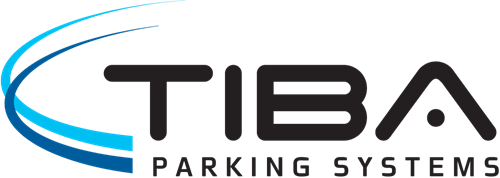
Over the past couple of months, we've had the pleasure of interviewing several parking industry experts for our In the Spotlight video segment. They've shared their knowledge on a range of parking-related topics, addressing key trends in the industry and presenting innovative solutions to common challenges currently facing parking operators and managers. Below you will find key highlights from the video interviews, including the benefits of a channel partner model, preparing for the future of mobility, and the role of AI in smart cities.
The Benefits of a Channel Partner Model
Ira Powers and Michael Lapidus joined In the Spotlight to discuss the strategic changes at WPS US, the reason that they are resisting the industry shift towards a manufacturer-direct model, and the benefits of a channel partner program.
Having existed in the US market for over 20 years, WPS has seen many consumer-driven changes. 15 years ago, when the industry was hardware-centric, the channel partner business model was prevalent but, within the past 10 years, the industry has shifted towards a manufacture direct model.
To provide the best experience for clients and end-users, WPS US has decided to return to a channel partner model. Parking operators can invest in the very best technology, but to extend the lifecycle of their equipment they need day-to-day support and ongoing maintenance. With such support, parking systems can last for 8 to 12 years or even longer.
A channel partner program guarantees that there is a local entity within the marketplace that can take responsibility for the full lifecycle of WPS parking systems. But more than this, it ensures that the channel partner has a deep understanding of the geographical region that they operate in and can even suggest potential aggregators and specific feature sets that can enhance the parking system.
Moving on to trends in the industry, Powers and Lapidus discussed the importance of connectivity to the larger urban mobility ecosystem. And, they predicted that as the desire for a frictionless parking experience grows, software will become predominant. Whilst hardware will still be a necessity, it will need to appear non-existent to the driver and so ANPR technology, which requires zero interaction from the driver, will become increasingly popular with parking operators.
Customer-Centric, Employee-Focused and Digital-First
During his time In the Spotlight with Parking Network, Pieter Sprinkhuizen, Director of International Business at IP Parking explained how consumer trends and their customer-centric and employee-focused company ethos have combined to shape their Xperience concept.
As a company dedicated to creating exceptional customer journeys, IP Parking is committed to ensuring that everyone interacting with their hardware has an optimal experience, including all of the departments within their company. Moreover, their digital-first mindset has differentiated IP Parking from the market since its beginning in 2005.
Being digital-first in a conservative market has its challenges, especially as PARCS vendors are, by their nature, equipment builders focused on hardware. Now, the parking industry is shifting towards a digital approach and beginning to look beyond the parking garage. You only need to compare the tradeshows of 2022 with those five years ago to see the shift from hardware to digital, big tech.
Digitalization may be making the world smaller but there are still key differences between the US and European markets. In comparison to the homogenous, massive market of the United States, Europe is fragmented, with distinct differences in the ways in which end-users interact with parking equipment. In some ways, this has given the US the edge in terms of technology, automation, and data collection and processing. As the world becomes smaller, global expansion plans will become a greater possibility, but only for companies that recognize and accommodate the differences in the global markets.
Preparing for the EV Revolution and Breaking Out of the US and into Europe
Parking industry veteran Gary Neff, now Senior Vice President-Strategic Sales & International Business Development at FLASH brought us up to date with the company’s goals to evolve into a global business through strategic acquisitions and existing clients.
After 25 years in the industry, Gary Neff has joined FLASH with the goal of opening up opportunities to take FLASH around the world. Whilst FLASH has been focused on North America, and predominantly in the United States, their solution is designed to be an international platform and they are keen to enter the European and UK markets.
Following 11 acquisitions, and with more in the pipeline, FLASH operates as a combination of all these companies working together to create the go-to mobility platform. Managers and operators working with FLASH receive more benefits from their PARCS system than simply access and revenue control, they actually have new revenues created for them, as the end-to-end solution actively encourages people into the parking garage.
And, having just closed a new round of funding in excess of 250 million USD there will be even more revenue streams created. Including a comprehensive EV charging program that integrates seamlessly with the existing PARCS product. This way EV charging payment and reservation can be combined with parking. Helping parking and mobility hub operators get ahead of the game when it comes to the EV revolution.
Artificial Intelligence – The Future of Smart Cities
For this In the Spotlight edition, Subhash Challa, CEO of sensen.ai joined us to share more about how AI can create disruptive technologies that will provide the solution for the smart cities of the future.
Globally, cities are performing a balancing act due to increasing levels of congestion; on the one hand, they want to support the businesses that operate in those cities, but on the other hand, they want to improve road safety and reduce harmful emissions. As they search for solutions to overcome these challenges many cities are looking to the curb to make sure that it is used more equitably and shared between on-street parking, last-mile mobility solutions, loading bays, curbside dining, taxi ranks, bus lanes, clearways, etc. City center streets are segmented by various by-laws for each of these uses, and yet many municipalities are monitoring them manually with on-street patrols.
Sensors and cameras, especially those augmented with artificial intelligence algorithms such as sensen.ai’s, can detect vehicles and signage to ensure these various by-laws are adhered to without manual patrols. Their software platform offers many configurations depending on whether a city wants to monitor on-street parking, off-street parking, or by-law compliance. And whilst there is a growing demand for parking management, parking enforcement, and curbside management, use cases differ geographically, for instance in the US there is a demand for automating enforcement with mobile license plate recognition, whilst in Singapore fixed on-street cameras are more popular.
From Isolated Parking Assets to Connected Mobility Hubs
For a very special edition of In the Spotlight, we traveled to Liverpool for an interview with Harrison Woods, CEO of YourParkingSpace Solutions. We discovered how they bucked the trend by developing the software first, and then the hardware, all as a means to creating a truly digital experience.
Launched in 2014 as an online shop window, YourParkingSpace was designed to give non-traditional parking assets the same market visibility as mainstream commercial parking operators. From one site in Liverpool, the pre-book and subscription parking platform grew to be the largest in the UK with over 85,000 locations and more than 2 million active users.
Through their various integrations, YourParkingSpace learned that parking operators often use multiple third-party vendors to manage their facilities. With this in mind, they created an end-to-end solution that would allow all the products to connect and help operators to make informed decisions and boost revenues.
With the software taken care of, YourParkingSpace Solutions turned to the hardware, beginning with the kiosk. By designing a parking kiosk from the ground up YourParkingSpace provides a traditional payment method for drivers, that will help them gather the data they require to transition them to a more controlled, digital experience.
The Role of Computer Vision in Parking
Jussi Mäkinen, CEO of 6sense Innovations Ltd outlined the role that computer vision has to play in parking and what the future might look like for ANPR providers.
Based in Finland, where many parking facilities already provide a free-flow, ticketless operation, 6sense Innovations built their computer vision solution with this market in mind. Only when they came to introduce their solution to new markets did they realize that Finland was ahead of the market, especially compared to the rest of Europe. However, their solution has still been well adopted by the wider parking industry as, unlike other computer vision-based systems which are restricted by their reliance on hardware, 6sense Innovations is fully-scalable and runs on the cloud.
Now they are receiving requests for additional services such as Find My Car. And, as parking operators continue to expand into smart mobility, commercial real estate, and other adjacencies, 6sense Innovations is becoming invaluable to them as it can scale into all of these use cases. In terms of these other use cases, 6sense Innovations are busy creating an entirely automated retail store, where the shopper simply walks in, picks their stuff, and walks out.
Automated Parking Systems – A Solution for Cities Worldwide
Müştak Ağrikli, Managing Director of Parkolay joined In the Spotlight to share his expertise on mechanical and automated parking systems, the solution they provide, and the challenges they have and will need to overcome to attain mass adoption.
Mechanical parking structures have been around for almost 100 years since they first started appearing in the 1930s. Yet there is reluctance amongst European parking operators to install them, despite increasing demand for parking and decreasing land to build on. In fact, in many city centers in Europe, as is the case elsewhere in the world, new developments require a certain amount of parking spaces, despite limited footprints.
Müştak explains that part of the problem that mechanical and automated parking systems face is that they are not commonplace, so operators fear that users will not understand how to park and retrieve their vehicles. And, there is a concern that there are long waiting times and long queues forming at facilities.
But over the past 24 years, Parkolay has developed a customer-centric product. They have learned that automated and mechanical parking facilities, both from an engineering and architectural standpoint must be designed to allow the first-time user to park conveniently, comfortably, and safely.
That's it for now, but stay tuned for upcoming interviews and check out past In the Spotlight videos here.



